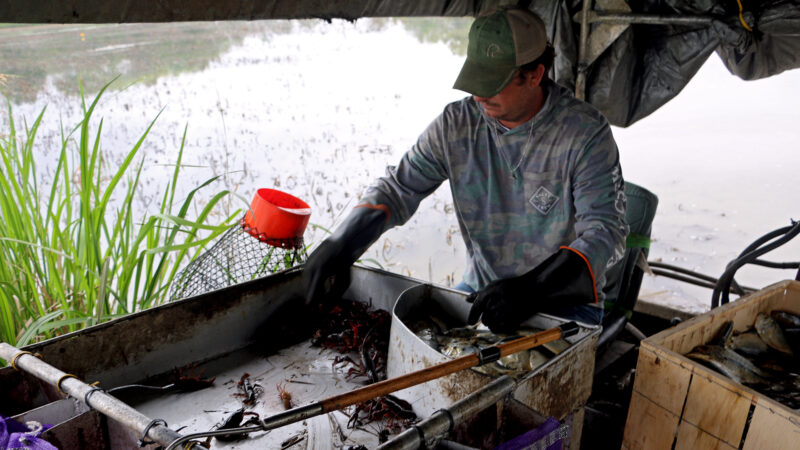Reverse Integration In A Birmingham School
 Birmingham — Birmingham was at the heart of the Civil Rights Movement, a major front in the battles that ended legal
Birmingham — Birmingham was at the heart of the Civil Rights Movement, a major front in the battles that ended legal
segregation. When the schools were integrated, white people fled the city, taking resources and other
advantages with them. That continues today, but about two dozen families are bucking the trend and trying to reverse the
process. WBHM’s Southern Education Desk reporter Dan Carsen has the story:
Birmingham’s public schools are 95 percent black and 90 percent on free or reduced lunch. The system has been under state control since June and has been hemorrhaging students for decades. And at this point, it’s certainly not just white flight: many poor black families do
what they can to enroll their kids elsewhere. To put it mildly, Birmingham schools have a stigma.
So it was unusual when Laura Kate Whitney enrolled her four-year-old, Grey, in pre-K at Birmingham’s
Avondale Elementary.
“Our neighborhood school hosted an open house, and we were completely shocked,
in a good way, as to what we saw,” says Whitney.
She and her husband are white middle-class professionals and part of a group of two dozen similar
families who are not buying the conventional tradeoff — that if you live within city limits and have
means, you send your kids to private school, period.
Whitney’s friend Elizabeth Brantley also enrolled her four-year-old at Avondale, which last year was four
percent white. But Brantley grew up in nearby Mountain Brook, one of the whitest and wealthiest communities in
America. Her impressions of Avondale might come as a surprise:
“The minute we walked in, we were like, ‘this is just a normal school. This feels like
the kind of school that I went to when I was little.'”
These parents want convenience and higher property values, but they also really believe in diversity.
Whitney says she’s not concerned with her child being in a place where he looks different from the
other kids.
“I feel like at this age, they don’t really see color,” she says. “They go straight to playing
together, and learning about each other and talking and sharing snacks. I want him to have
those types of experiences. I mean, we live in a city that is extremely diverse.”

Researchers say in most cases of school gentrification, which is relatively rare, wealthier people move
into a newly desirable neighborhood, and the school’s demographics follow suit. But the area around
Avondale is already white and middle class. Unrelated to that, it’s actually one of the better schools in
the system. Even so, Avondale parent Katrisa Larry welcomes the new families.
“I love it,” she says emphatically. “We need them, most definitely.”
White students bring more fiscal resources, parental involvement, and subconsciously, higher
expectations, say researchers. And according to Tondra Loder-Jackson, Associate Director of the Center for Urban
Education at the University of Alabama at Birmingham, integrated schools confer many other benefits.
Summarizing a body of research, she says, “White graduates from those schools believe that they’re more open-minded
about race and less likely to stereotype. The black graduates, they’re more confident about
competing with whites, and they’re also not as likely to see whites as being categorically racist.”
But the white parents coming to Avondale aren’t counting on a love-fest. One possible stumbling block is that inner-city schools tend to be
more authoritarian, more “old-school,” relying on teacher-centered models of instruction as opposed to more progressive
methods favored by many middle-class parents, methods that involve kids initiating more of their learning.
Jennifer Stillman, a research analyst for the New York City Department of Education, just published a
book on school gentrification. She offers a warning:
“In America, we often try to sort of talk about how much we value diversity. But
when we talk about it, we sort of speak of it as in, ‘We’re all the same, and we just have to get
over our superficial differences.’ But people actually can be very different. And it can be
very uncomfortable to have this clash of parenting values.”
She and Loder-Jackson point out that it’s the middle-class “integrators” who have a choice — the families
who’ve already been in the community for a while usually don’t have the means to leave. If the new parents are
unhappy, Stillman says, the gentrifying group almost always falls apart and the kids go elsewhere.
But Stillman, who lives New York’s Harlem, respects the parents who do stick it out.
“Being an urban educator, I was extremely conflicted, and yet I couldn’t bring myself
to do it,” she admits. “I definitely have admiration for people who are out there trying to make
integration a reality.”
But parent Laura Kate Whitney is optimistic:
“It’s so funny that our kids can be the bridges that bring us together, and maybe
spread this throughout the city.”
Despite her good intentions, she acknowledges the next few months will be critical in shaping the future
at Avondale, and possibly at other even-more-challenging schools in this civil-rights crucible.

Alabama’s racial, ethnic health disparities are ‘more severe’ than other states, report says
Data from the Commonwealth Fund show that the quality of care people receive and their health outcomes worsened because of the COVID-19 pandemic.
What’s your favorite thing about Alabama?
That's the question we put to those at our recent News and Brews community pop-ups at Hop City and Saturn in Birmingham.
Q&A: A former New Orleans police chief says it’s time the U.S. changes its marijuana policy
Ronal Serpas is one of 32 law enforcement leaders who signed a letter sent to President Biden in support of moving marijuana to a Schedule III drug.
How food stamps could play a key role in fixing Jackson’s broken water system
JXN Water's affordability plan aims to raise much-needed revenue while offering discounts to customers in need, but it is currently tied up in court.
Alabama mine cited for federal safety violations since home explosion led to grandfather’s death, grandson’s injuries
Following a home explosion that killed one and critically injured another, residents want to know more about the mine under their community. So far, their questions have largely gone unanswered.
Crawfish prices are finally dropping, but farmers and fishers are still struggling
Last year’s devastating drought in Louisiana killed off large crops of crawfish, leading to a tough season for farmers, fishers and seafood lovers.







